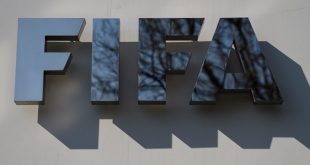 Each day women’s football continues to grow around the world and especially in the CONCACAF region. Not only do the reigning Women’s World Cup champions (USA) and reigning Olympic champions (Canada) hail from the region, but this summer a record six nations will represent CONCACAF at the 2023 FIFA Women’s World Cup in Australia/New Zealand.
Each day women’s football continues to grow around the world and especially in the CONCACAF region. Not only do the reigning Women’s World Cup champions (USA) and reigning Olympic champions (Canada) hail from the region, but this summer a record six nations will represent CONCACAF at the 2023 FIFA Women’s World Cup in Australia/New Zealand.
Nevertheless, there is still a lot of work to be done across all 41 CONCACAF Member Associations and CONCACAF is intent on making sure all 41 MAs receive the resources and support they need to grow girls and women’s football in their respective country.
With many nations recently coming out of Covid, CONCACAF Women’s Football Development Supervisor Alexa Vickroy was part of a delegation that had an opportunity to visit with several MAs and learn more in detail about the strategic plans in place for women’s football.
“The Development Department’s remit covers grassroots to professionalization, and I think that is the key cog within our organization, because you need national teams and club teams with the capability and competencies to participate in our competitions and reach that next level,” said Vickroy in an exclusive interview with CONCACAF.com.
“We are providing coaching education and the necessary tools to succeed, which can eventually lead into success in our competitions. That will drive value and hopefully sustain this football ecosystem that we’ve built at CONCACAF, especially in the women’s game,” added Vickroy.
Several of the nations visited by Vickroy were Saint Lucia, US Virgin Islands, Grenada, Bahamas and Turks and Caicos Islands. Many of these islands are still trying to return to normalcy following the COVID-19 pandemic, and so it was important to see that the football-participating girls in the country were having the opportunity to resume playing in a safe environment.
“Now that they’re back in school, are there safe spaces to play in? Are there people that are trained and qualified to hold these practices and trainings? Do they have the qualifications or even the knowledge to be training kids, and in the way that’s connected to the Member Association or even to CONCACAF? There’s a lot of natural disasters that have happened and that can completely wipe out a field, so that’s another challenge for our nations where there’s limited infrastructure.
“But overall, there is a collective goal in increasing girls and women’s football development amongst our MAs and within their communities.
While Vickroy and her CONCACAF colleagues continue to work to help women’s football develop in those countries, the people she met on her travels and the spirit they showed served as an inspiration.
“On some of these visits it coincided with a women’s only coaching license course. It was a C license course and there might have been 20 to 30 women in the course. It’s their first step into their coaching journey. Many of these women have families, they have a day job or maybe even two day jobs, and so the fact that they are coming together to take time off of work, take time from their families, just for the passion of football and their passion to help their community and provide a safe space for girls to play in it, or be even be that role model for girls, is really brave,” said Vickroy.
The objective is that the groundwork being laid by these coaches and role models will one day soon lift these nations into a more competitive landscape so that they, too, can dream of qualifying for major national team competitions like the CONCACAF W Gold Cup and even the FIFA Women’s World Cup.
“Our competitions department has implemented a new women’s football competitions ecosystem, so there are platforms for players to play in. As the development team, it’s our job to help our members develop those players that will eventually play in those competitions, so I foresee a lot more participation and growth across the region.
“A lot of government agencies and schools are coming in and supporting football as a sport for social development. I see a lot more of a holistic approach to this, and then I think we’ll see a lot more competition and parity amongst the national teams, and opportunities for smaller nations to reach either a CONCACAF final championship or even a World Cup,” concluded Vickroy.
 Arunava about Football A look at football & the world through my eyes!
Arunava about Football A look at football & the world through my eyes!



